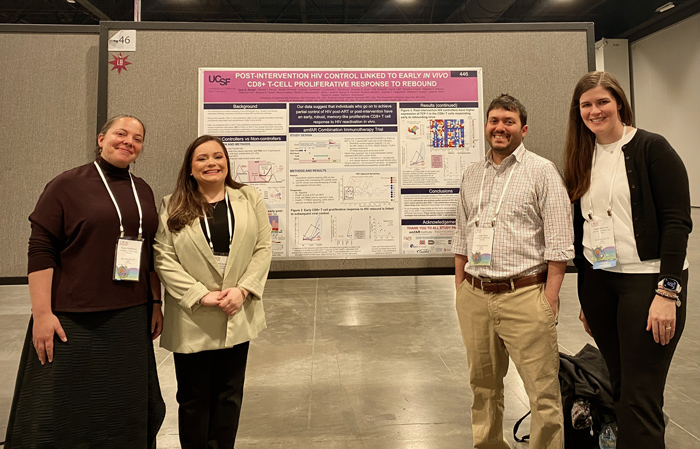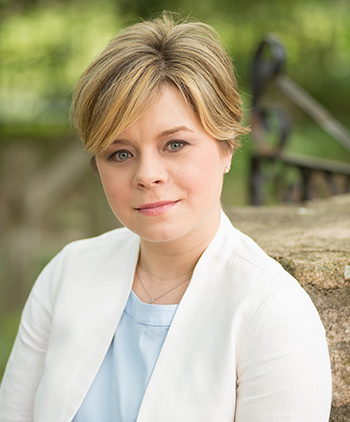One Cure Trial Generates Three More
The success of a ground-breaking amfAR-funded cure trial prompts new research to help end AIDS
It goes without saying that, in the field of scientific research, successful results often lead to more questions. And that’s certainly true about HIV cure research—one significant study can multiply into other studies. The amfAR-University of California, San Francisco (UCSF) cure trial is a case in point.
In 2023, results from a complex trial conducted by the amfAR Institute for HIV Cure Research at UCSF, showed that individuals may be able to control HIV, at least in part, when they stop antiretroviral therapy (ART) as part of a combination immunotherapy. The trial combined five interventions: an HIV DNA vaccine, the immune hormone IL-12, a vaccinia boost vaccine, broadly HIV neutralizing antibodies, and a drug to activate the immune protein TLR9.
While almost all participants showed signs that the virus persisted during the initial analytic treatment interruption (ATI), seven of the 10 did not rebound in the usual way, where a rapid burst of uncontrolled viral growth would be expected. Instead, they were able to control the virus in the absence of ART. Five of the seven participants had some level of HIV control for at least 100 days off ART, and one of the seven had no detectable virus for 18 months off ART.
But more needs to be learned, including: What factors promote post-treatment control? And, how do ATIs in cure trials affect participants on a personal level?

Post-Treatment Control
Two new studies, both conducted at the lab of Dr. Rachel Rutishauser of UCSF, an amfAR grantee and a principal investigator of the abovementioned cure trial, separately examined the function of broadly neutralizing antibodies (bNAbs) and CD8+ T cells as part of an immune response. Both studies were presented at the 31st annual Conference on Retroviruses and Opportunistic Infections (CROI) in March.
In an analysis of bNAbs, Dr. Amelia Deitchman and colleagues found that, while higher bNAb exposure was associated with delayed viral rebound, bNAb exposure and the susceptibility of HIV to being neutralized could not be consistently linked to post-treatment control.
In light of these results, researchers suggest immunologic changes contribute significantly to post-
treatment control. This was explored in another study that examined the role of CD8+ T cells, immune system cells that are able to expand in number to fight against viral and bacterial infections.
Previous studies have described a rapid increase of HIV-specific CD8+ T cells in elite controllers (people living with HIV who control infection in the absence of ART), one feature that differentiates them from people whose virus is not controlled without the help of ART. But, until now, this HIV-specific CD8+ T cell phenomenon had been noted only in the lab.
Along with other researchers, lead author Demi A. Sandel of UCSF analyzed this phenomenon in the amfAR-UCSF trial and a separate study and found that CD8+ T cells proliferated early and robustly in participants. The results support continued focus on developing HIV cure strategies that enhance the capacity of HIV-specific CD8+ T cells to increase.
Personal Experiences

In a recent study, amfAR grantee Karine Dubé, DrPh, of the University of California, San Diego and the University of North Carolina at Chapel Hill, and her research team sought to understand the personal experiences of PLWH enrolled in cure-related trials involving extended ATIs, including psychological stressors and the need to change sexual behaviors (e.g., new requirement to use condoms or PrEP).
Many participants agreed to enroll as “giving back to science [was] part of a personal HIV journey.” One participant “described excitement around this trial, even claiming willingness to sacrifice his life for an HIV cure.” But then half of those interviewed described “emotional highs and lows during the ATI, coupled with periods of uncertainty about the outcome.” Four of the seven noted challenges protecting their partners from HIV during the ATI.
The authors concluded that the study findings “underscore the need for increased and dedicated efforts to support [PLWH] undergoing intensive ATI trials, particularly in the areas of mental health and partner protections.”
Click Here to read more from the July 2024 issue of amfAR INNOVATIONS.
Share This:
